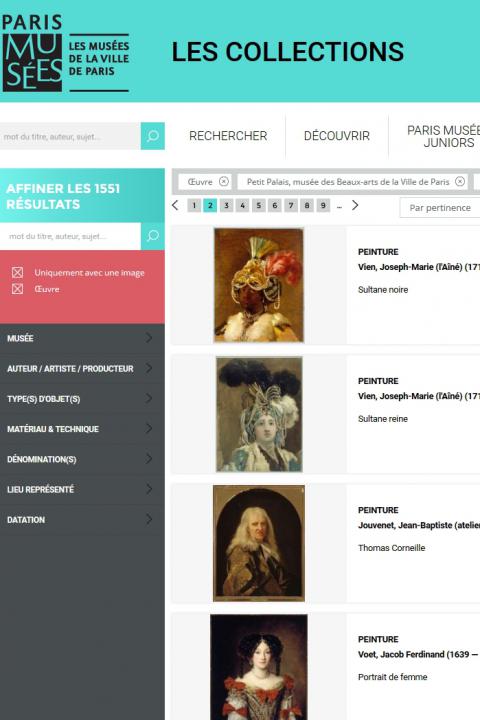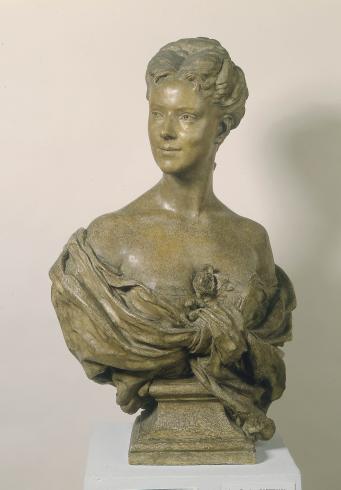The charming features of Mademoiselle Fiocre are an example of the talents of Carpeaux, who has left the legacy of a remarkable gallery Second Empire portraits.
In 1870, Eugénie Fiocre, prima ballerina at the Paris Opera, was at the peak of her career and was also the charming star of Coppelia.Carpeaux executed this bust whilst working on one of his major works, Dance, a bas-relief for the facade of the Opera house. The marble, which was exhibited at the Salon of 1870, was admired by the Goncourt brothers.
Rather than portray her as a ballerina, as Degas had done several years previously, Carpeaux depicts Eugénie Fiocre in the manner of his usual models - duchesses, marchionesses and princesses. Her smooth bust emerges from flowing folds of drapery borrowed from the best portraits of the baroque era and is perched on a classical pedestal.
This elegant formula enhances all of Carpeaux’s female busts. Here, by paying tribute to the curve of her back, delicate features, pert nose and captivating beauty, he succeeds in capturing what his model would become.
In actual fact, the fate of dancers in the 19th century was not an enviable one: poverty, decline and prostitution awaited them on leaving the Opera. Eugénie Fiocre proved to be a lucky exception: she married well after a career crowned with glory.
A. S.

City of Paris municipal collection's website
The collections portal can be used to search the collections of Paris’s 14 municipal museums (approximately 336,000 works, including 43,000 belonging to the Petit Palais).
It is also possible to download around 12,000 images of the museum’s works free of charge.
Access the Museums of the City of Paris collections portal
Extern databases
Discover a selection of databases online presenting works from the Petit Palais or documents concerning the history of the museum.

